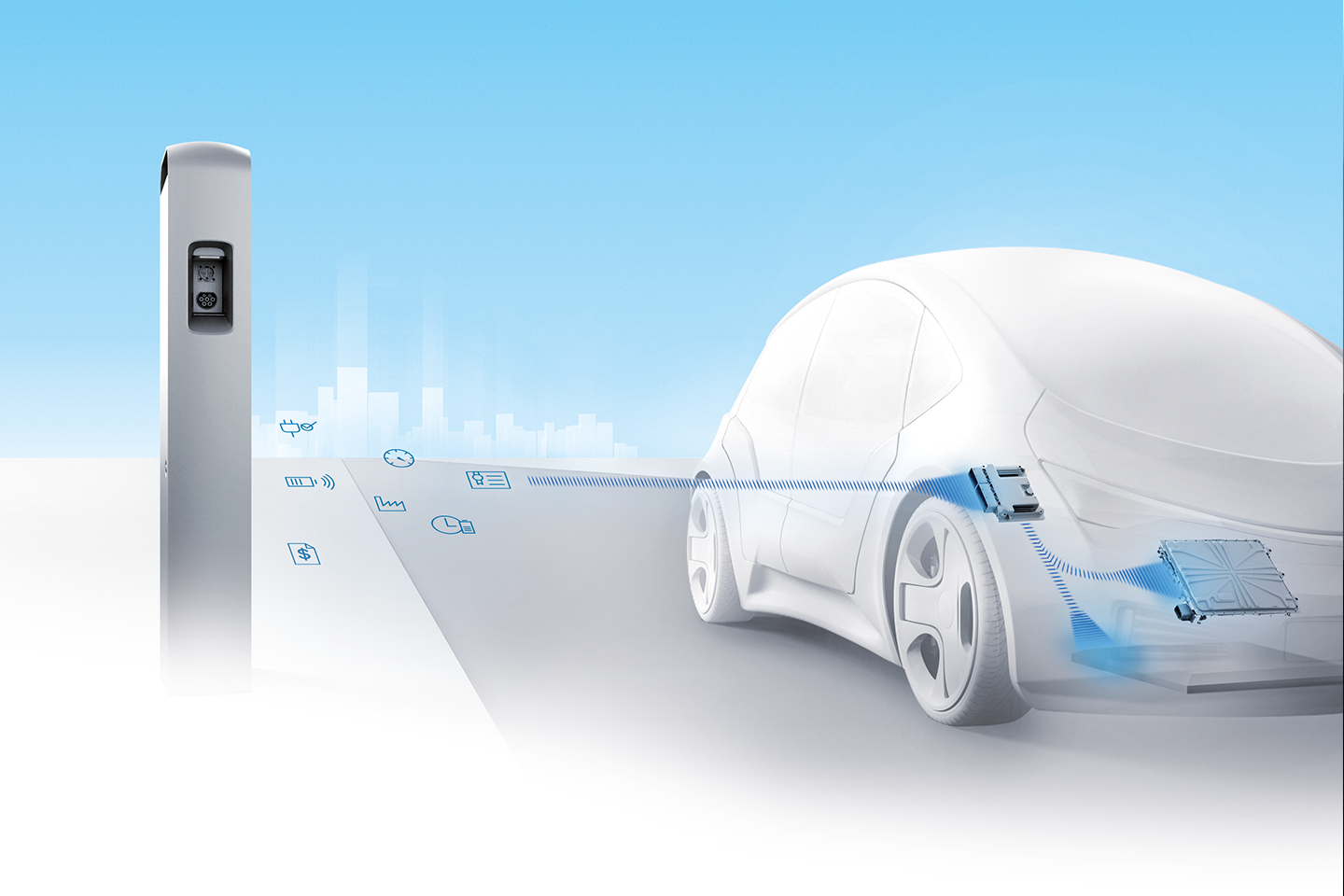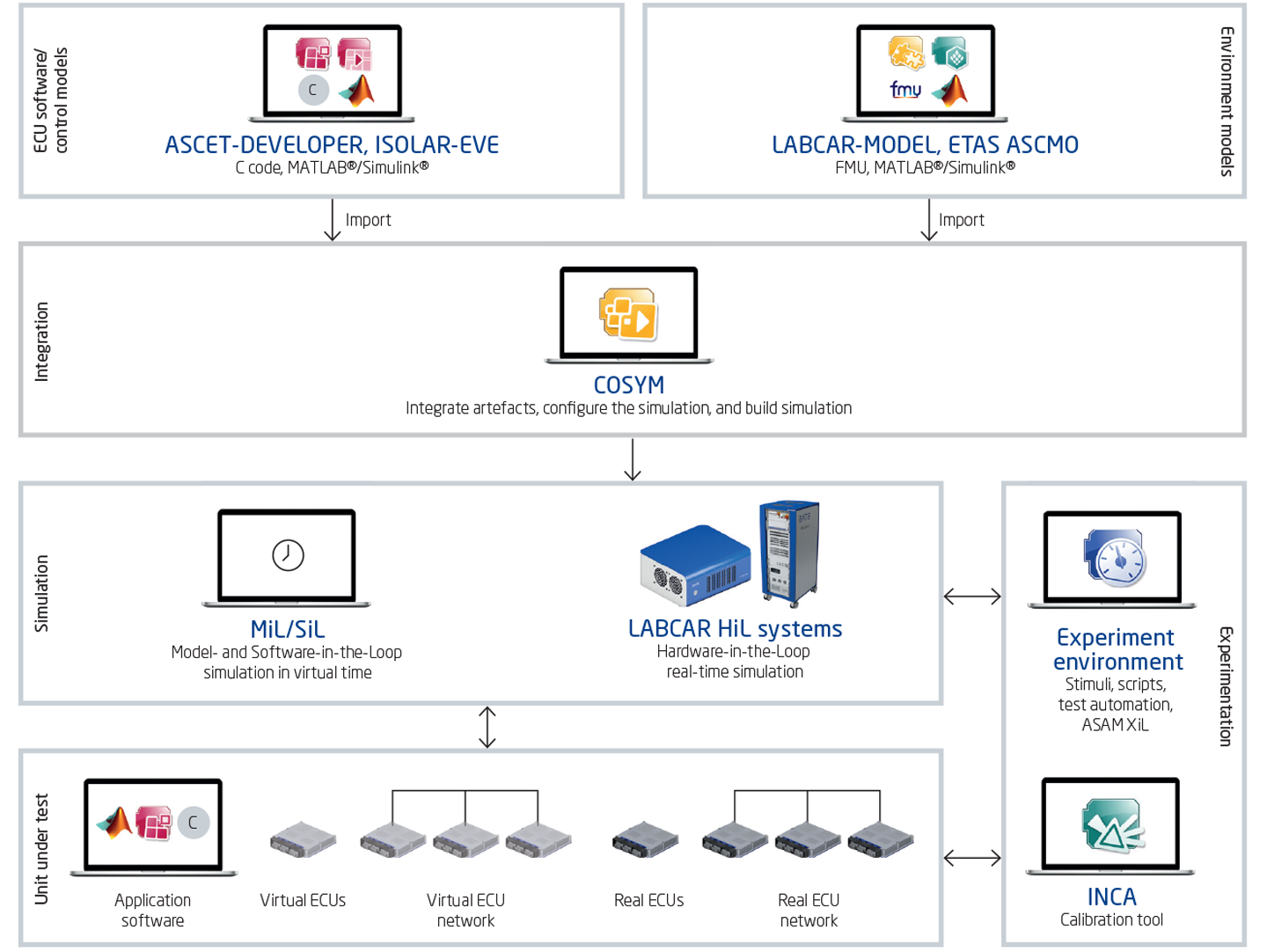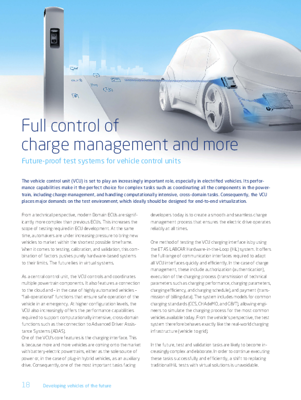Full control of charge management and more
Future-proof test systems for vehicle control units

The vehicle control unit (VCU) is set to play an increasingly important role, especially in electrified vehicles. Its performance capabilities make it the perfect choice for complex tasks such as coordinating all the components in the powertrain, including charge management, and handling computationally intensive, cross-domain tasks. Consequently, the VCU places major demands on the test environment, which ideally should be designed for end-to-end virtualization.
From a technical perspective, modern Domain ECUs are significantly more complex than previous ECUs. This increases the scope of testing required in ECU development. At the same time, automakers are under increasing pressure to bring new vehicles to market within the shortest possible timeframe. When it comes to testing, calibration, and validation, this combination of factors pushes purely hardware-based systems to their limits. The future lies in virtual systems.
As a central control unit, the VCU controls and coordinates multiple powertrain components. It also features a connection to the cloud and – in the case of highly automated vehicles – “fail-operational” functions that ensure safe operation of the vehicle in an emergency. At higher configuration levels, the VCU also increasingly offers the performance capabilities required to support computationally intensive, cross-domain functions such as the connection to Advanced Driver Assistance Systems (ADAS). One of the VCU’s core features is the charging interface. This is because more and more vehicles are coming onto the market with battery-electric powertrains, either as the sole source of power or, in the case of plug-in hybrid vehicles, as an auxiliary drive. Consequently, one of the most important tasks facing developers today is to create a smooth and seamless charge management process that ensures the electric drive operates reliably at all times.
One method of testing the VCU charging interface is by using the ETAS LABCAR Hardware-in-the-Loop (HiL) system. It offers the full range of communication interfaces required to adapt all VCU interfaces quickly and efficiently. In the case of charge management, these include authorization (authentication), execution of the charging process (transmission of technical parameters such as charging performance, charging parameters, charging efficiency, and charging schedule), and payment (transmission of billing data). The system includes models for common charging standards (CCS, CHAdeMO, and GB/T), allowing engineers to simulate the charging process for the most common vehicles available today. From the vehicle’s perspective, the test system therefore behaves exactly like the real-world charging infrastructure (vehicle to grid).
In the future, test and validation tasks are likely to become increasingly complex and elaborate. In order to continue executing these tasks successfully and efficiently, a shift to replacing traditional HiL tests with virtual solutions is unavoidable.

ETAS test systems are ready for this shift. LABCAR enables a seamless test transition into SiL or MiL environments (Software-in-the-Loop, Model-in-the-Loop) where they can be executed in their entirety on a local PC or in the cloud. This offers multiple benefits, including the ability to perform these tests faster and at an earlier stage of the development process. Thanks to the scalable computing power of cloud computing, the performance capabilities of the test system can be scaled to meet the exact requirements. Virtualization therefore significantly increases the efficiency of VCU development. System testing based solely on HiL systems is not an effective approach.
ETAS offers an open simulation platform that is designed to meet complex future requirements: ETAS COSYM. COSYM is an efficient solution for successfully executing testing and validation tasks for connected, embedded systems – both in a HiL environment and, as an alternative, in SiL or MiL environments. In other words, COSYM facilitates integrated XiL-tests, where XiL refers to “everything”-in-the-loop, meaning either of the three variants. It also supports cloud functionality.
Summary
ETAS test systems are designed with the future in mind, combining HiL testing capabilities with increased virtualization. Testing, validation, and calibration can be transferred seamlessly from a hardware-based environment to a purely computer-based, virtual working environment, and vice-versa. Consequently, ETAS test systems play a key role in the efficient development of even the most complex ECUs, such as the vehicle control unit (VCU), including its charging interface.
Author
Heiko Sutter is Senior Program Manager in the field of Test and Validation at ETAS GmbH.
